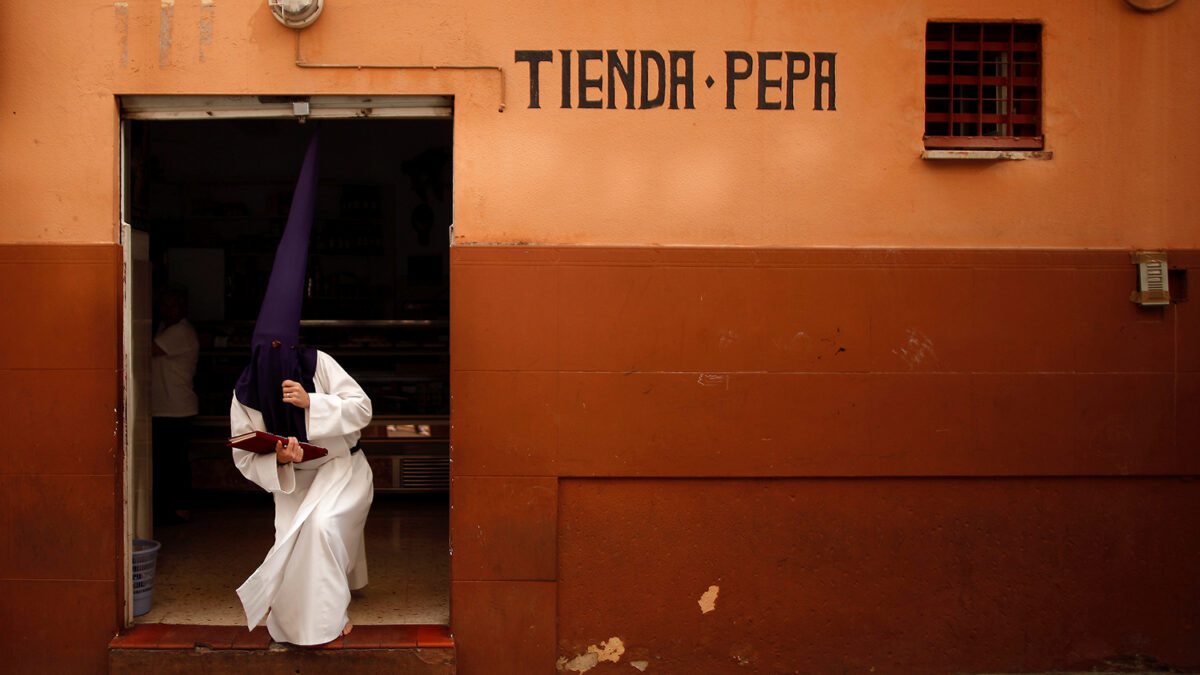Stolen Symbols
What would you think if you saw the streets of your city flooded by large groups of robed figures with their heads covered by pointed hoods? In Spain nobody would have the least suspicion, because even small children know that these are the spectacular Catholic processions staged every Easter to celebrate the Holy Week. The impressive headgear has its origin in the Dark Ages, when clowns and jesters sometimes wore pointed hats to enhance their imaginary foolishness or ineptitude. This gimmick inspired lawmakers to make criminals parade through the streets wearing the cone hat while people threw things at them, spit on them and called them offensive names.

What would you think if you saw the streets of your city flooded by large groups of robed figures with their heads covered by pointed hoods? In Spain nobody would have the least suspicion, because even small children know that these are the spectacular Catholic processions staged every Easter to celebrate the Holy Week. The impressive headgear has its origin in the Dark Ages, when clowns and jesters sometimes wore pointed hats to enhance their imaginary foolishness or ineptitude. This gimmick inspired lawmakers to make criminals parade through the streets wearing the cone hat while people threw things at them, spit on them and called them offensive names.
During the Middle Ages, the Court of the Spanish Inquisition placed a similar cone hat on its prisoners, usually decorated with symbols of sin and reparation. Centuries later, in 1799, Goya would include an etching of an Inquisition prisoner wearing a pointed hat in his renowned series “Los Caprichos”. With this penitential implication, a religious brotherhood from Seville had adopted it in the 17th century and the tall peaked hat–“capirote” in Spanish– was a national success, representing the penitent’s approach to heaven. The novelty added by religious brotherhoods was the fabric covering face and chest in order to preserve the repentant sinner’s identity. As Richard Nathaniel Wright wrote in 1957 in his book “Pagan Spain”, it must have been from Andalusia that the Ku Klux Klan appropriated its world-famous –or infamous– costume. As if the resemblance of the long hooded robe with two slits for eyes wasn’t enough, KKK also flaunts the white color and the square cross emblem. What the American supremacist group surely didn’t emulate was the intention of righting a wrong. Should the Brotherhood of Silence sue the Ku Klux Klan? They certainly have a case.
